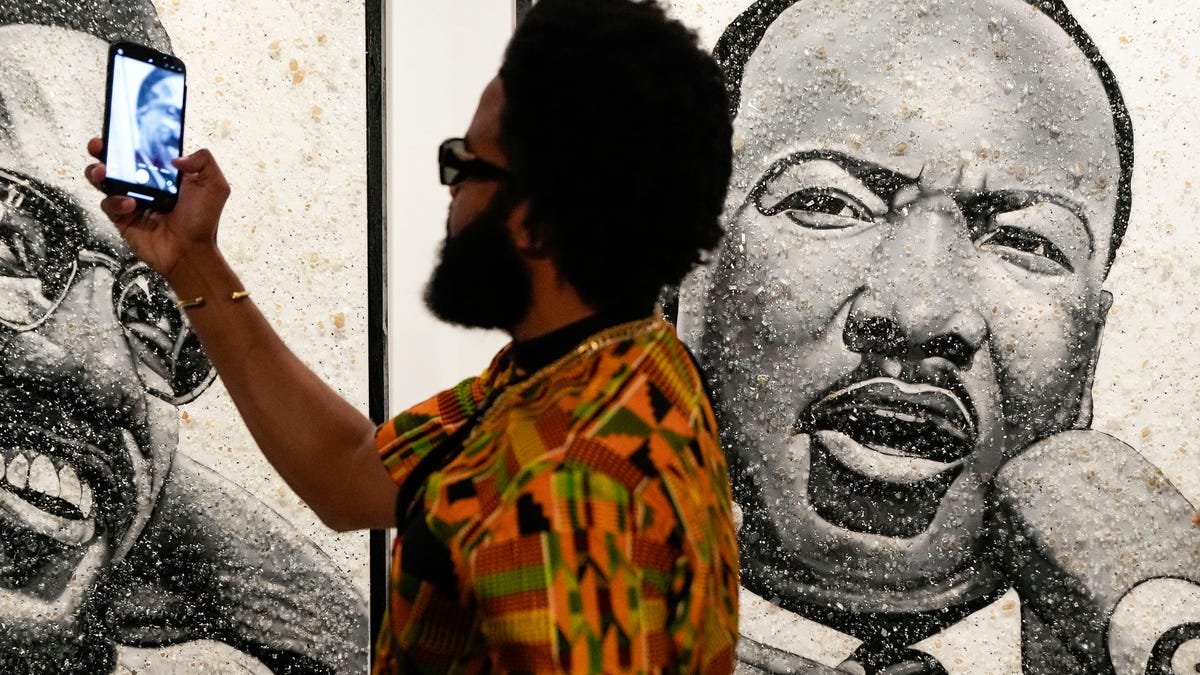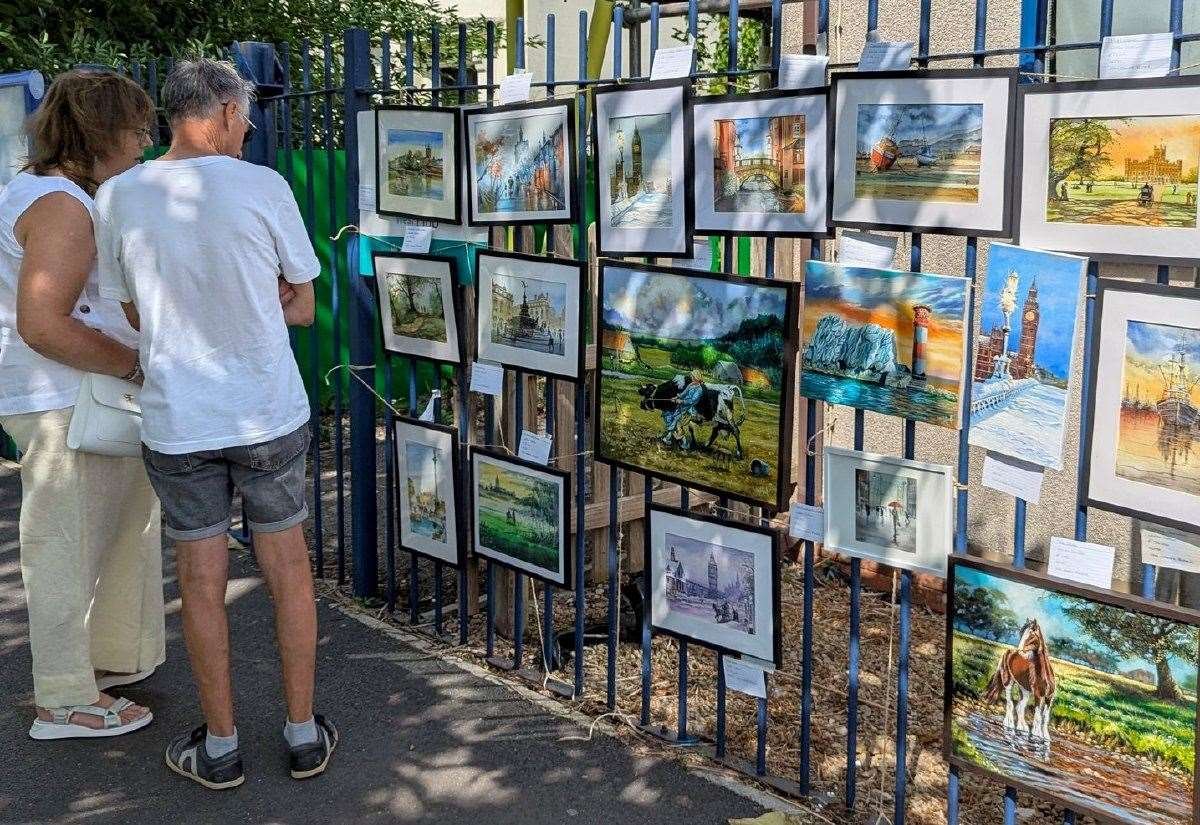visual art meets bioengineering
On the occasion of her solo booth debut at the Independent Art Fair with Management gallery, artist Anastasia Komar explores the intricate intersection of art and contemporary bioengineering. Known for her hybridization of acrylic paintings and advanced polymer sculptures, the artist’s work moves beyond traditional media to express the connections between biological imaging and artistic expression.
In the following interview with designboom, Komar discusses the inspirations and techniques that drive her unique artistic practice, from her childhood fascination with biological structures to the influences of science, theology, and history. She reflects on her educational background in Architecture and Environmental Design, revealing how these fields shape her approach to art, and shares insights into the evolving complexity of her work showcased in solo exhibitions across the globe. Through her practice, Komar invites viewers to engage with the emerging scientific renaissance, challenging them to reconsider their understanding of life and its myriad possibilities.
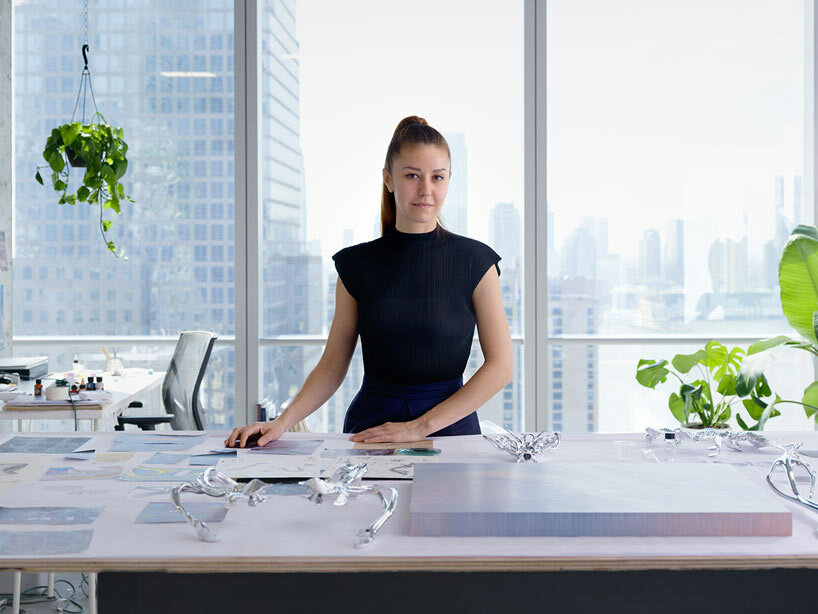 portrait of Anastasia Komar, image courtesy of the artist and Management, New York
portrait of Anastasia Komar, image courtesy of the artist and Management, New York
a dialogue with anastasia komar
designboom (DB): Your work has been described as exploring the intersection of art and contemporary bioengineering. Can you tell us what first drew you to this blend of disciplines?
Anastasia Komar (AK): I have been interested in biological imaging since childhood, but my exploration into the field of contemporary bioengineering started during the pandemic. There was a fear of something deadly that we couldn’t perceive or control, paralyzing the entire world. This inspired me to explore the deeper structures and layers of tissues and cells. I began looking at images of electron microscopy; they seemed absolutely alien, yet it was amazing to realize that I was looking at components of life. The colors and textures were so novel to me, and I constantly wondered whether what I saw was exactly as it appeared or if it was altered by the imaging methods and instruments. I think this was where I first truly found a direct connection of biology to art.
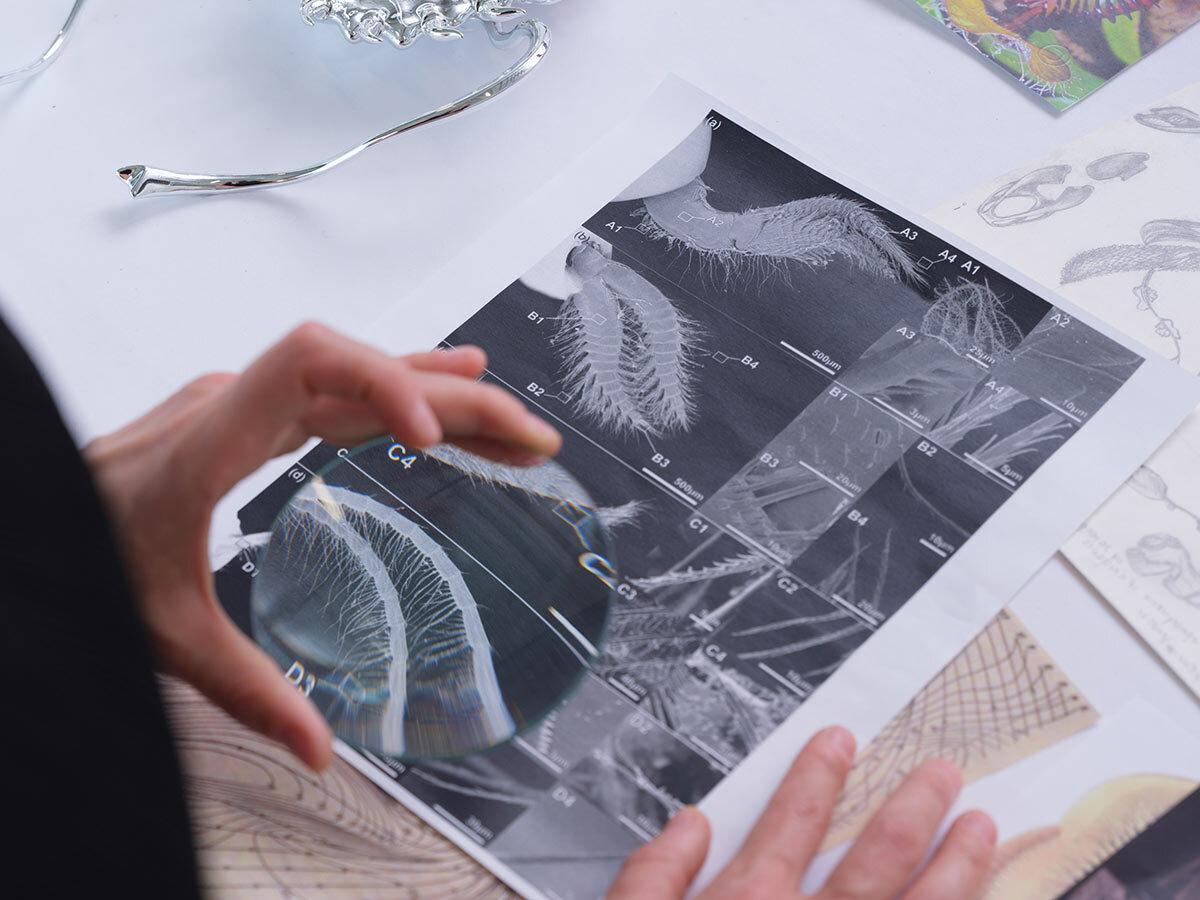 image courtesy of the artist and Management, New York
image courtesy of the artist and Management, New York
DB: Your current solo booth at Independent with Management shows acrylic paintings with advanced polymer sculptures. What first drove you to hybridize these media?
AK: At first, sculpture and painting were separate aspects of my practice that did not really intersect. I was doing a summer residency at SVA in 2021 and just through experimentation started combining 3D-printed forms with the paintings because I had an inexplicable urge to fuse these two aspects of my practice.
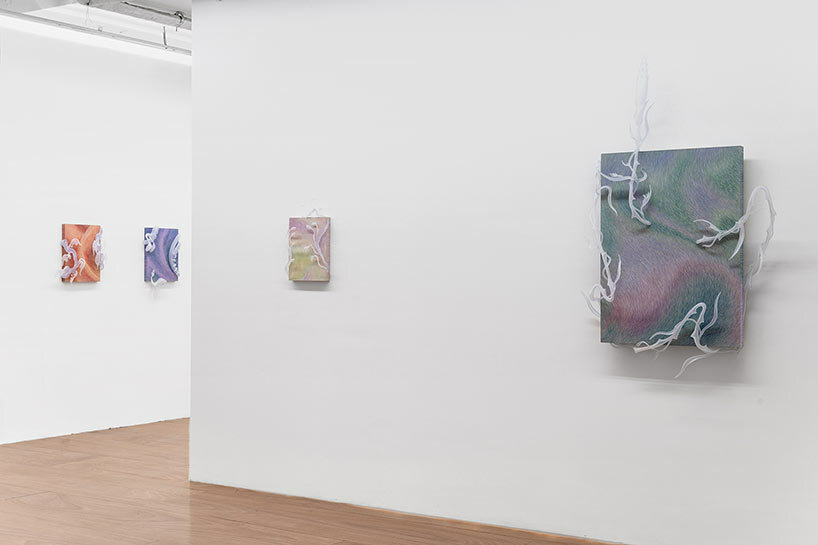
Anastasia Komar, ex-vivo, 2022, installation view. courtesy of the artist and Bank, Shanghai
DB: How do the fields of science, theology, and history influence your process?
AK: The materials for most of the scientific findings I use for my work come from tissues and cells of animals and plants that have Latin names and, most of the time, are related to ancient myths and religions. Sometimes there are historical narratives that are also part of the subject matter that complicates the story of individual works. The references are almost embedded in the subject matter itself.
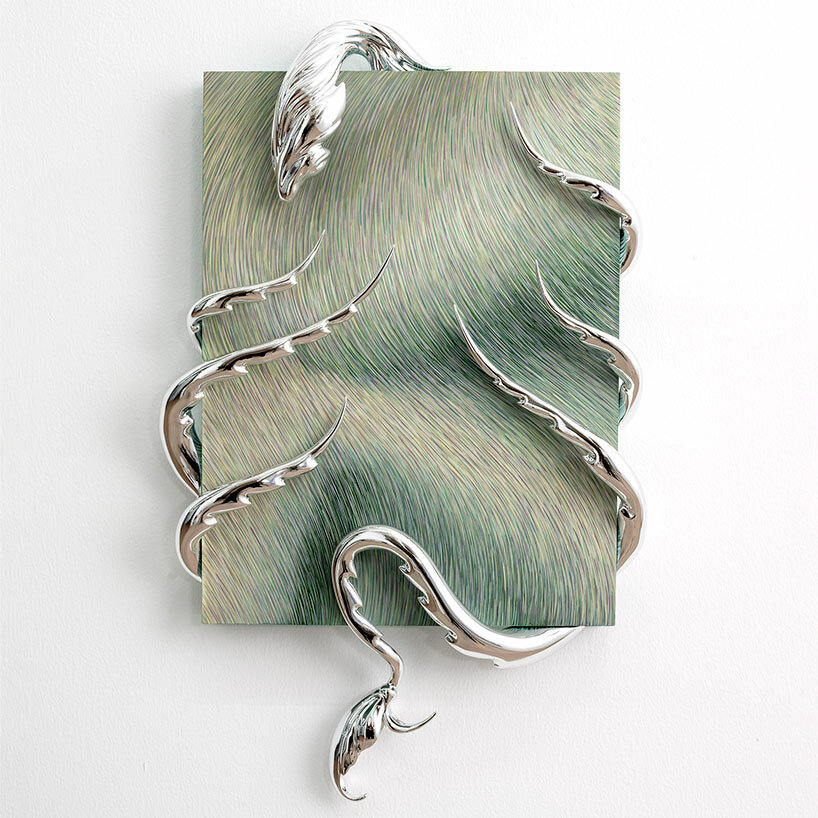
Anastasia Komar, Striatum, 2023, acrylic and electroplated polymer on board, 16 x 12 x 4 inches, photography by installshots.art, courtesy of the artist and Management, New York
DB: What techniques or inspirations drive your painting style with its short, luminescent brushstrokes?
AK: I saw Felix Feneon’s Collection show at MoMA during the Pandemic and I love the early pointilists’ work. It’s incredible how they constructed the image from tiny marks, thinking about the small atoms that make up reality. I relate to the fact that it was one of the moments when technological advancements made artists reconsider how they should depict reality, it is very close to my own practice. In my paintings, I try to keep my marks as sharp as possible to underline the dynamics and fluidity of my representation of the information field – an Aether that permeates all things, made visible.
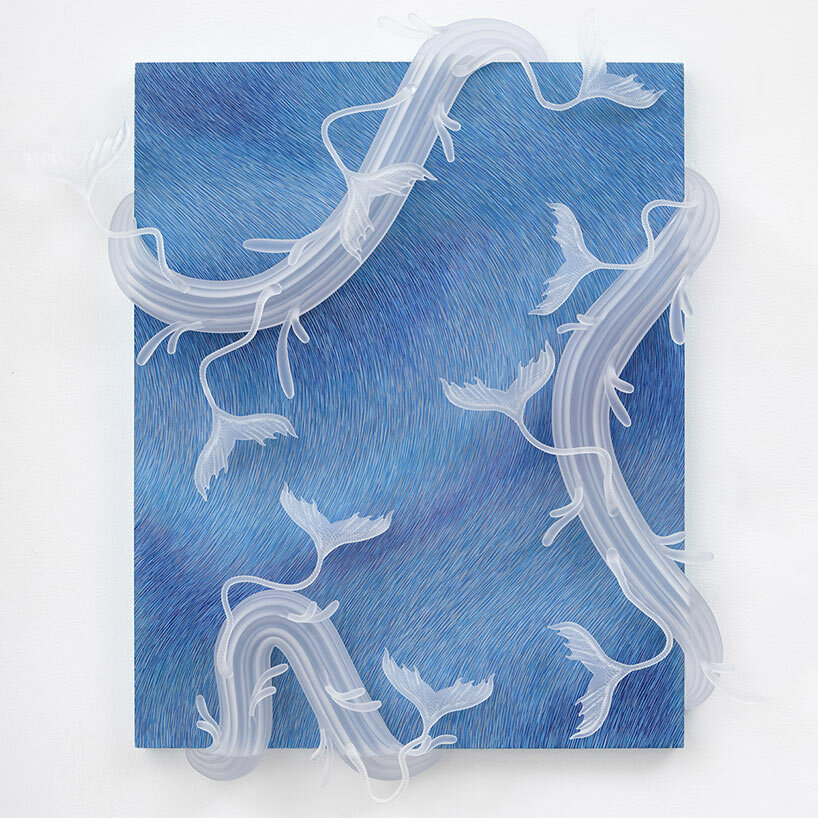
Anastasia Komar, Karyorelictea, 2023, acrylic and glass polymer on board, 21 x 24 x 3 inches. photography by installshots.art, courtesy of the artist and Management, New York
DB: Your polymer sculptures are said to echo biomolecular, mythological, and mammalian forms. What is the origin of these influences?
AK: Early naturalists, who illustrated and cataloged living creatures, aimed to comprehend and immortalize life through their observations and explorations, believing that illustrating and cataloging would serve as crucial means to give enduring life to collected material. Their archives were a source of knowledge for a new generation of explorers, and I see myself as following in their footsteps.
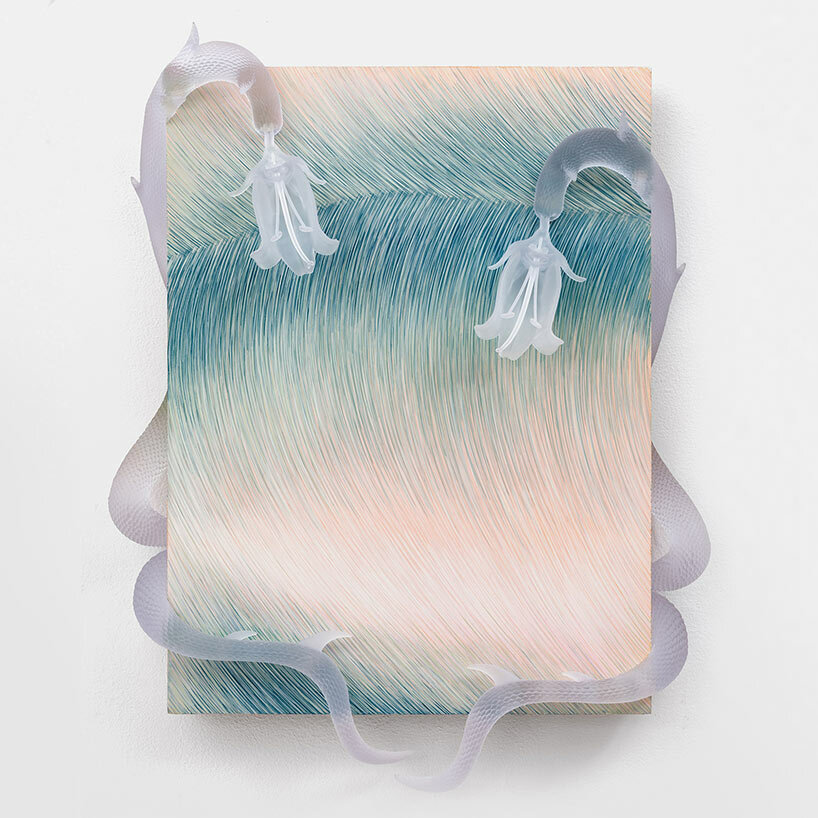
Anastasia Komar, HeLa, 2022, acrylic and glass polymer on board, 16 x 12 x 4 inches, photography by installshots.art, courtesy of the artist and Management, New York
DB: You’ve said in the past that you harness technology to illuminate aspects of our reality that are difficult to comprehend but profoundly impact our lives. Can you provide an example of a specific technological concept that has inspired your recent works?
AK: The series of works I created for the booth at Independent was named after and inspired by a research database that categorizes a new revolutionary medical treatment method via the discovery of bioelectricity. The name of this database, ‘Electroceutical Design Environment,’ or EDEn, carries the connotation of the biblical Garden of Eden. I wanted to highlight these dual meanings: the unprecedented opportunities for longer, healthier lives through biosynthetic computing and the Judeo-Christian creation story that warns of the consequences of pursuing knowledge at all costs. I don’t think we can predict the outcomes of our journey to understanding life, which is the primary endeavor of transhumanism.





